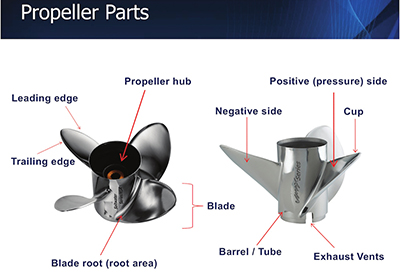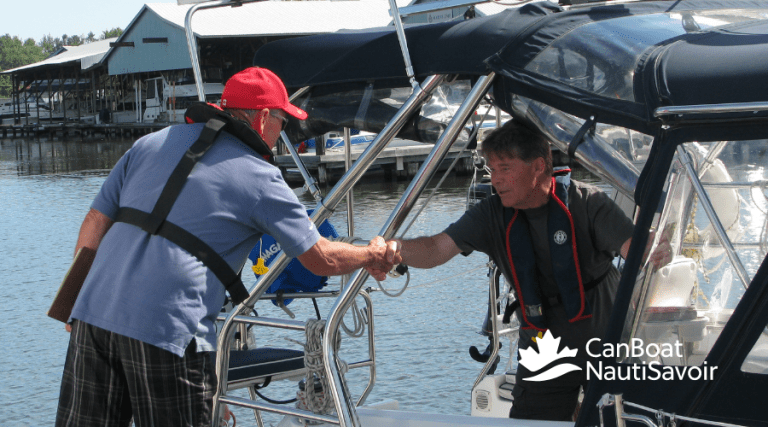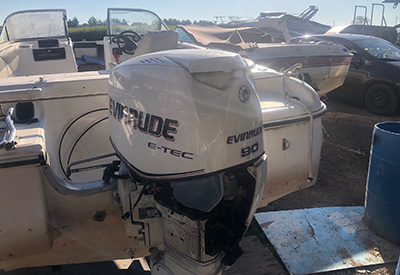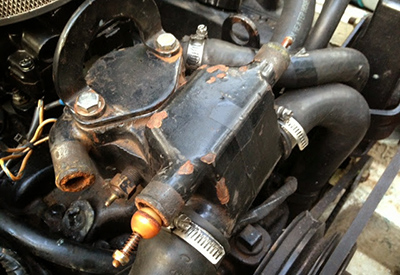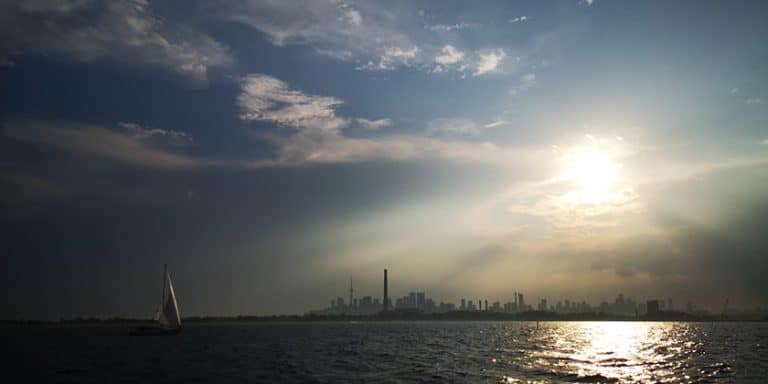Ask Andrew: VC17 – Some Facts and Suggestions

Nov 9, 2023
The News:
Boaters were met with signs like these at chandleries and on social media posts, just last week:
We regret to announce that Interlux VC17 antifouling boat paint has been discontinued due to international environmental regulations.
If this was your go-to paint, we apologize for any inconvenience this may cause.
AkzoNobel is working on developing an alternative. Fingers crossed.
Thank you for your understanding.
This is a follow-up to the US EPA’s statement in 2021, stating:
Today, the U.S Environmental Protection Agency (EPA) is releasing the interim decision for irgarol, which finalizes the cancelation of its use as an active ingredient in antifoulant paint in order to help preserve America’s diverse aquatic ecosystems. After completing an ecological risk assessment, EPA determined that irgarol, which is used in antifoulant paint and as a materials preservative in algicidal paints, is toxic to both freshwater and marine plants, including causing the bleaching of coral.
Other rumblings on the use of antifouling paints included proposed bill by the US state of Washington – 70.300.020 – Restrictions on Sale and Application of Antifouling Paint Containing Copper bans the manufacture, sale, and distribution of new recreational vessels with copper-based antifouling paint beginning on Jan. 1, 2021. However, DOE recently submitted a report and recommendations to the Washington State Legislature — to be considered during the 2020 legislative session — that would delay this ban until Jan.1, 2026.
There are no surprises here: We all know that antifouling paints aren’t ideal for the environment or the human body. The variety and combination of chemicals that require the use of respirators and full body suits and gloves are eye opening.
As boaters, we tend to turn a blind eye to this, when contrasting that environmental impact with the damage-potential of a boat sitting at dock and allowing marine life to create its own habitat on your hull. Secondary to this damage-potential is the ability of the hull to move efficiently through the water. For racing sailors this is paramount.
All of this said, VC17 is a favourite amongst sailboaters. One of the North American leading antifouling products, its disappearance from the marketplace leaves a massive void. This also leaves many boaters wondering what their next steps are and how they should plan for spring launch.
The problem:
VC17 is thin and smooth, with teflon as the prime ingredient. (Teflon is the same stuff used on non-stick frying pans). It’s meant to allow the boat to move at maximum efficiency through the water. The catch-22 is: You can’t paint over VC17, except with move VC17. The good news: Depending on the state of your hull, it can be a fairly easy paint to remove. Begin by power washing thoroughly, and then wipe down with acetone, xylene or even denatured alcohol. (You will need both skin and lung protection if you use these solvents.) A light sand will finish the job off. Here’s where things get tricky: Marinas. Yacht clubs and boat yards often have strict rules about how this work can be done – both to address the environmental impact, as well as the potential for hull dust to stick to your neighbour’s topsides. If you contract a boat yard to take on the work, some may not guarantee the work, because of the possibility of residual teflon causing subsequent antifoul paint layers to not stick properly. Be thorough and meticulous to achieve the best results.
The initial problem now resolved, what next? What can you use to replace VC17 as your preferred antifouling? The news is so new that there are few concrete facts. But here’s how I see some options developing:
- Stock up now. Head to your local marine store and buy as much as you need to get through 2024. This may only serve to delay, but in the meantime, you’ll be ready for next season.
- Azkonobel and Interlux are working to solve the problem from a few angles:
– Creating a new product that is comparable to VC17 that is approved in North America. The theory sounds great, but approvals could take years
– Creating or modifying a product to make it comparable and compatible, eliminating the need to remove the existing VC17 on your hull
– Recommending a via alternative that is already available. At the moment, Interlux is recommending VC Offshore. Not quite the same stuff, but still widely available in North America

- Switch antifouling, and brace yourself for a change in performance. If you’re happy with Interlux products, Micron CSC is highly popular, widely used because of its effectiveness in keeping marine growth at bay, but won’t offer the same slick, smooth surface that you’re used to with VC17
- Switching to an antifouling alternative, like Sea Speed. I’ve written a review on Sea Speed previously (https://canadianboating.ca/tech/maintenance/ask-andrew-is-sea-speed-the-answer/), and their stats are impressive. A relatively new entrant into the market, but keen to grow.
- No antifouling – leaving the hull bare. Some may call the thought blasphemous – but for some, this may be the perfect time to try a test season without the antifouling. This may be best for boats that are dry-sailed or trailered, but can also be tested with boats staying in-water. One way to mitigate growth is to arrange with your local yard to lift and power wash your underwater hull mid-season.

- Mechanical cleaning – arranging for a service like the Keelcrab to clean your hull, in-water, using an underwater drone.
The long-term:
As an industry, we are reactive rather than proactive – especially as it relates to environmental concerns and advancement and implementation in technology. The VC17 announcement should serve as a learning opportunity and a driver to choose and test solutions that may be out-of-the-box, but best for the long-term of our industry.
Becoming less reliant on fossil-fuels, harsh chemicals, cleaning products, paints/varnishes/antifouling will become increasingly important. Exploring electric technology, safe alternatives with the conservation of the marine habitats that we affect will be the key in enjoying our waterways for decades to come.
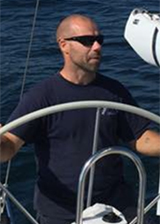
Andrew McDonald is the owner of Lakeside Marine Services – a boat repair/maintenance firm based in Toronto. Andrew has worked in the marine industry for 12 years and is a graduate of the Georgian College ‘Mechanical Techniques – Marine Engine Mechanic’ program.
Questions or comments for Andrew? Email him directly via: askandrew@lakesidemarineservices.ca

